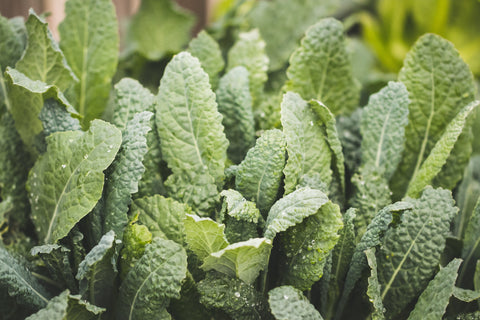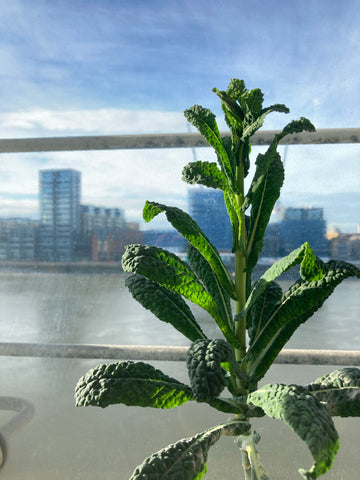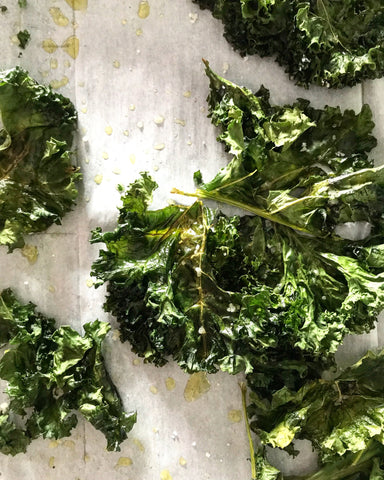The Kingly Kale

In the cold, dark days of December, there is one vegetable that stands out about the rest. While other plants suffer, this one thrives with its large, deep green, frilly leaves looking regal in the winter sun. It shrugs off frosts like they didn’t happen – in fact it improves with them as the freeze turns some of the starches into sugars.
Well-known now as a health-packed superfood, these vibrant green leaves are a bowl full of goodness. No wonder, when you hear they are brimming with much needed nutrients such as vitamins A, K, B6 and C, calcium, potassium, copper and manganese. Even long before nutritional science its healthy properties have been appreciated, it is said that the ancient Greeks used to drink them boiled to sober up!
The Kingly Kale is our pick for December.
Grow
In an ideal world where space isn’t a problem, you’d sow kale in late spring or early summer. By the autumn and winter you’d then have lovely bushy kales to harvest. However, when growing in small spaces, we sow kale in the autumn, after our summer crop.
Eventually, kale plants like a lot of space, but they are slow growing and are easily transplantable so you can sow them closer together in a seed tray or in a pot. Thin the seedlings if needed and when they have 5 or 6 true leaves, transplant them to their final growing positions – giving each plant 30cm from the next!

Harvest
For the first few months, harvest entire seedlings as ‘baby kale’ to thin out the pot, leaving a couple of plants completely untouched. These plants are the chosen ones to grow through the winter, so you want to leave them to grow as big as possible. Once you have just your chosen plants left – we aim for 3 plants in one of our 30cm x 30cm pots – you can start harvesting bigger leaves from them.
Harvest by snipping or cutting the leaves, close to the main stem. Always choose the oldest leaf, furthest down the plant, leaving the young ones at the top to keep growing.
Eat
There are many reasons for the current “kale craze” – it is low in oxalate, meaning that it’s many nutrients (vitamins and minerals) can be absorbed more easily, is an antioxidant and has, rather surprisingly or perhaps not that surprisingly, more iron per serving than beef!
Kale can be eaten in so many ways. Add it to a stew or curry in the last 5 minutes of cooking (just long enough so it softens and also remains green), fry it in olive oil to make a simple side veg or add it straight to a smoothie.
To make a nice winter salad, try this easy, massaged kale recipe which only takes 15 minutes.
But really our absolute favourite treat is kale crisps – 10/10!

